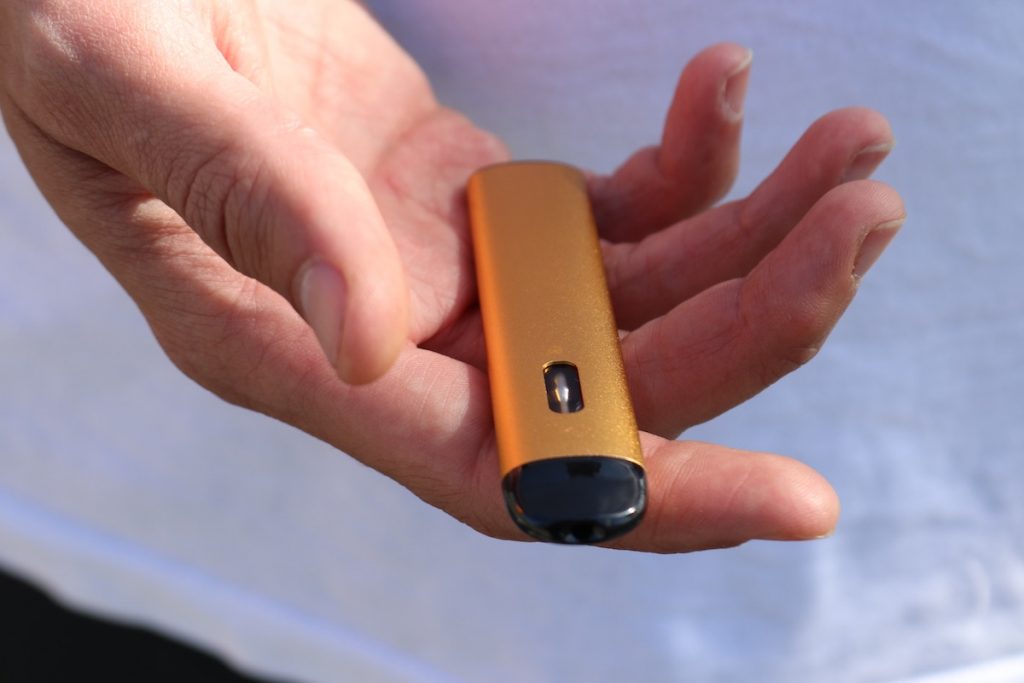

Perhaps one of the greatest achievements of public health policy in recent years has been the significant reduction in smoking among the UK population. However, this decline has begun to stagnate. In this context, it is important to examine how young people are introduced to smoking and e-cigarettes and what factors influence them.
An opportune moment study Hopkinson and colleagues (2024) hope to shed some light on this issue. Their aim was to investigate the link between time spent on social media and e-cigarette or tobacco use among young people.

What drives young people’s decisions about smoking tobacco or e-cigarettes?
Methods
The authors used data from a large annual UK household survey. The focus was on participants aged 10-25 years. This covered the period from 2015/16 to 2020/21. It was in 2015/16 that a question about e-cigarette use was added to this annual survey, so this was the first time point for which data were available.
The sample included 28,000 households. Data were collected through a combination of face-to-face interviews and online questionnaires.
Young people were classified as smokers if they regularly smoked between 1 and 6 cigarettes per week. To be classified as e-cigarette smokers, individuals had to report using these products at least once per week.
Participants were asked whether they belonged to any social media websites, although the authors did not have access to the specific social media sites that the young people interacted with. Popular social media sites included X (formerly Twitter), Facebook, and WhatsApp, for example. They were then asked to estimate the time they spent on these websites on a typical day, ranging from none to more than 7 hours, with several options in between. Interacting for at least one hour a day would classify the individual as a social media user.
Essentially, most of the statistical analysis was based on classifying participants into binary groups based on their responses. For example, consumption of between 1 and 6 cigarettes per week was the threshold for classifying an individual as a smoker. Other specific statistical techniques were used to explore the data, which the authors explain clearly in their paper.
Results
The authors’ original hypothesis was that There is an association between exposure to social media and the use of electronic cigarettes and smoking. Of those who did not use social media, 2% were confirmed to be smokers, while 15.7% of those who used social media for more than 7 hours a day were smokers. This association was also confirmed for e-cigarette users.
The research also found that Parental smoking was associated with increased social media use among youth.
There was also Strong associations between e-cigarette use and under-18sthe legal age for the purchase of these products. Also be a man and of a highest income household increased the likelihood of using e-cigarettes.

15.7% of the young people in the sample who used social media more than 7 hours a day were also smokers, indicating a link between the two.
Conclusions
This study is the first to use data from a longitudinal UK survey exploring the association between social media use and e-cigarette and tobacco use. Overall, they found that Greater social media use was positively associated with all types of smoking.
The authors suggest that exposure to social media increases the likelihood of smoking, as young people are targeted by the tobacco industry.This is done through direct marketing or by looking at social media influencers who support smoking.
The authors point to the case of Germany, which has successfully banned social media platforms targeting young people for promoting smoking in all its forms. They suggest that the UK could also introduce a similar policy that would make social media companies responsible for ensuring that algorithms do not target young people with advertising or other messages that promote smoking.

Young men and those from higher-income households were found to be more likely to use e-cigarettes.
Strengths and Limitations
This is the first study to examine the relationship between smoking and social media use among youth. The authors are candid about the limitations of their data and methods.
An obvious limitation is that this study was based in part on self-reported information. It is difficult to know how accurate the answers given to the questions are without independent scrutiny. It is interesting that children aged between 10 and 15 had to receive permission from their parents or guardians to complete the survey. Again, it is not clear how this may have influenced the data, if at all.
Participants were given gift vouchers for participating in and completing the survey; the authors do not state the value of these vouchers. Using this method to encourage registration and completion of the survey could have influenced how some people completed the questionnaire. Given the low response rate to surveys in general, it is understandable that the researchers used gift vouchers to encourage uptake and completion of the survey. Higher response rates through the use of gift vouchers could improve the overall results rather than harm them. The authors included an analysis that took into account non-response bias.

We cannot be certain that parental permission did not influence young people’s survey responses.
Implications for practice
It is worth considering how this study and its findings could help practitioners. This research helps us understand the importance of social media use as an influence on all types of smoking among young people.In some ways, that’s the easy part; the hard part is what we do with that information. It would be unrealistic to expect young people to refrain from using social media in the hope that this would reduce their risk of smoking.
What we do know is that there are aspects of frequent social media use that are also common in addictive reward-seeking behaviour. This could help practitioners consider whether these young people are also at risk of problematic drug use, including alcohol. Clinicians should therefore not avoid questions about social media use and should continually explore associated risks in young people’s everyday lives, as information accessed online could negatively impact their wellbeing.

Physicians should consider whether young social media users might be at risk for other addictive behaviors besides smoking.
Declaration of interest
There are no conflicts of interest to declare.
Golf course
Primary role
Hopkinson, NS, Vrinten, C., Parnham, JC, Radó, MK, Filippidis, F., Vamos, EP & Laverty, AA, 2024. Association of time spent on social media with smoking and e-cigarette use among young people in the United Kingdom: a national longitudinal study. Chest, 79(7), pp.662-669. https://doi.org/10.1136/thorax-2023-220569
Other references
E-cigarettes and teenagers, cause for concern? Mental Elf, 20He April 2015. Marcus Munafo.







